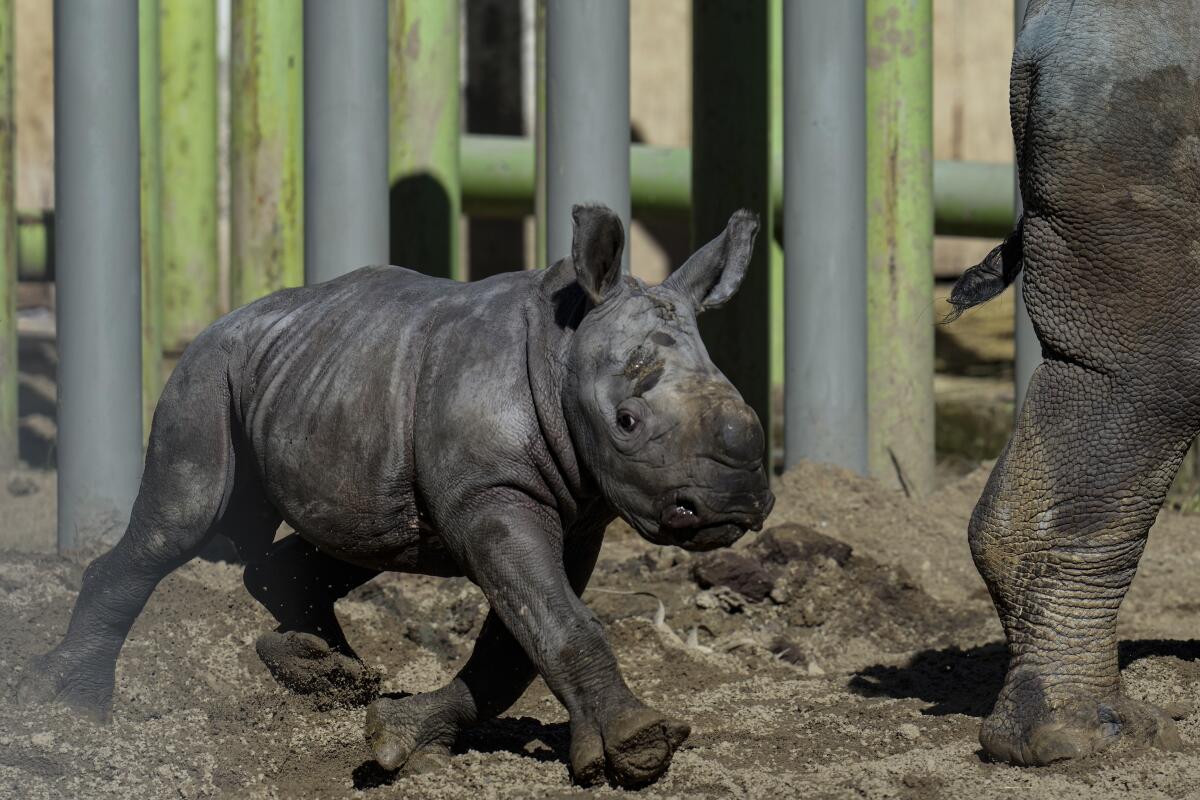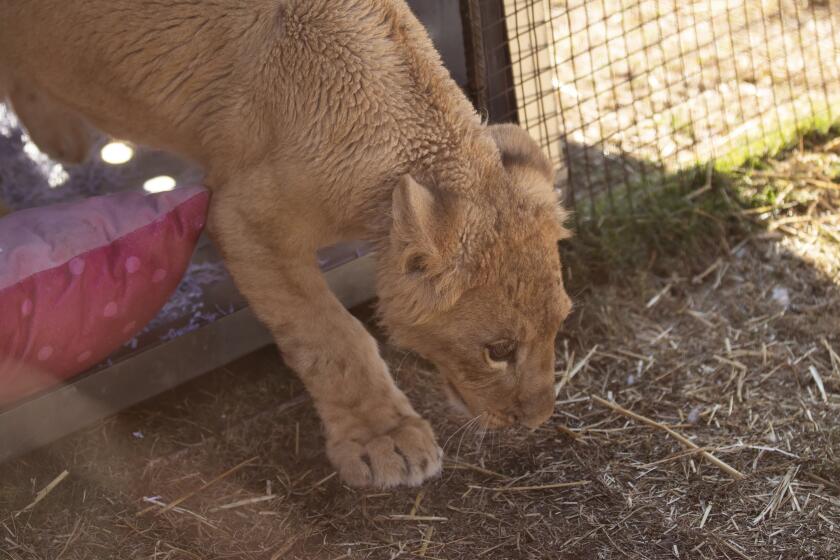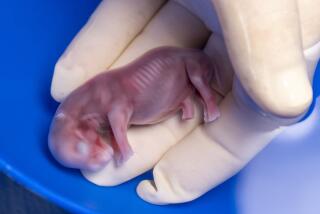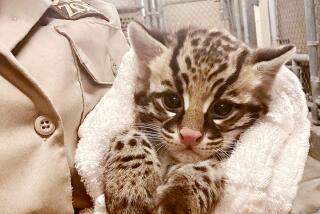Newborn white rhino Silverio takes first giant steps in a boost to his species

- Share via
SANTIAGO, Chile — Hannah, a 13-year-old white rhinoceros, has delivered a newborn calf in a rare zoo birth for the almost endangered species.
The arrival of the male calf, named Silverio, two weeks ago marked the third time that a white rhino has been born in South America. The Buin Zoo in Chile’s capital of Santiago unveiled Silverio to the public this month as he took his first giant-footed steps after 12 days of medical care in confinement.
The zoo hailed his birth as a “big achievement” for conservationists worldwide. Over the last year, only eight other southern white rhinos have been born.
The director of Buin Zoo explained that a recent string of failed rhino romances had dashed the hopes of conservationists attempting to breed the species across the continent. But Hannah and Oliver — a pair of southern white rhinos shipped to Santiago y from sub-Saharan Africa just over a decade ago — have hit it off, producing three calves in this one zoo.
“There are several zoos in Latin America that have a rhino pair and did not manage to reproduce,” said zoo director Ignacio Idalsoaga. “We are contributing with a ninth calf to a species that has only a few left in the wild.”
A team of veterinarians closely monitoring Silverio declared him healthy on Tuesday.
A 6-month-old lion cub named Freya who was rescued from the wildlife trade in Lebanon has been relocated to a sanctuary in South Africa.
The success story comes as fewer and fewer white rhinos roam the African plains. Northern white rhinos have effectively gone extinct, although the international scientific community has started to revive the species through assisted reproduction and stem cell research.
Southern white rhinos, the northern’s close cousin and a more common species, have been classified as “nearly endangered” by the International Union for Conservation of Nature, the world’s main scientific authority on the status of species. There are just over 10,000 southern white rhinos left in the world, the vast majority of them in zoos.
That’s still a major improvement from the turn of the 19th century, when the species was hunted to near oblivion. Intensive conservation efforts in the last few decades pulled southern white rhinos away from the brink of extinction, a rare example of robust recovery in the face of peril.
Northern white rhinos are on the brink of extinction. There are no living males, but their frozen sperm could allow scientists to save the species.
But that could easily change, conservationists say, as hunters continue to kill rhinos for their horns and the mammals struggle to reproduce in captivity, with a gestation period of 18 months and often more than one male needed to stimulate reproduction.
Humans are the only predators to rhinos, reports the international conservation union, with hunters killing an estimated 1,000 rhinos a year. It says that roughly 17 rhinos are born each year.
Batschke writes for the Associated Press.
More to Read
Sign up for Essential California
The most important California stories and recommendations in your inbox every morning.
You may occasionally receive promotional content from the Los Angeles Times.












